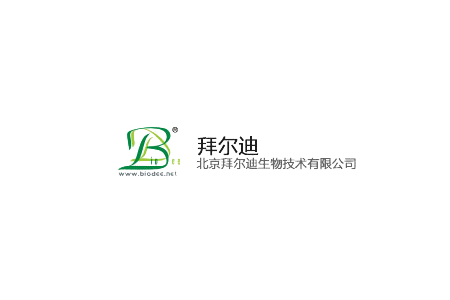

貨號
產品規格
售價
備注
BN42205R-50ul
50ul
¥1486.00
交叉反應:Human,Rat(predicted:Mouse,Chicken,Dog,Pig,Cow,Horse,Sheep,Goat) 推薦應用:WB,IHC-P,IHC-F,IF,Flow-Cyt,ELISA
BN42205R-100ul
100ul
¥2360.00
交叉反應:Human,Rat(predicted:Mouse,Chicken,Dog,Pig,Cow,Horse,Sheep,Goat) 推薦應用:WB,IHC-P,IHC-F,IF,Flow-Cyt,ELISA
BN42205R-200ul
200ul
¥3490.00
交叉反應:Human,Rat(predicted:Mouse,Chicken,Dog,Pig,Cow,Horse,Sheep,Goat) 推薦應用:WB,IHC-P,IHC-F,IF,Flow-Cyt,ELISA
產品描述
| 英文名稱 | LC3 |
| 中文名稱 | 自噬微管相關蛋白輕鏈3抗體 |
| 別 名 | Autophagy related protein LC3 A; Autophagy related protein LC3 B; Autophagy related ubiquitin like modifier LC3 A; Autophagy related ubiquitin like modifier LC3 B; MAP1 light chain 3 like protein 1; MAP1 light chain 3 like protein 2; MAP1A/1B light chain 3 A; MAP1A/1B light chain 3 B; MAP1A/1BLC3; MAP1A/MAP1B LC3 A; MAP1A/MAP1B LC3 B; MAP1ALC3; MAP1BLC3; MAP1LC3A; MAP1LC3B; Microtubule associated protein 1 light chain 3 alpha; Microtubule associated protein 1 light chain 3 beta; Microtubule associated proteins 1A/1B light chain 3; Microtubule associated proteins 1A/1B light chain 3A; Microtubule associated proteins 1A/1B light chain 3B; MLP3A_HUMAN. |
| 研究領域 | 腫瘤 細胞生物 神經生物學 信號轉導 細胞骨架 細胞外基質 細胞自噬 |
| 抗體來源 | Rabbit |
| 克隆類型 | Polyclonal |
| 交叉反應 | Human, Rat, (predicted: Mouse, Chicken, Dog, Pig, Cow, Horse, Sheep, Goat, ) |
| 產品應用 | WB=1:500-2000 ELISA=1:5000-10000 IHC-P=1:100-500 IHC-F=1:100-500 Flow-Cyt=1μg/Test IF=1:100-500 (石蠟切片需做抗原修復) not yet tested in other applications. optimal dilutions/concentrations should be determined by the end user. |
| 分 子 量 | 14/16kDa |
| 細胞定位 | 細胞漿 |
| 性 狀 | Liquid |
| 濃 度 | 1mg/ml |
| 免 疫 原 | KLH conjugated synthetic peptide derived from human LC3:31-121/121 |
| 亞 型 | IgG |
| 純化方法 | affinity purified by Protein A |
| 儲 存 液 | 0.01M TBS(pH7.4) with 1% BSA, 0.03% Proclin300 and 50% Glycerol. |
| 保存條件 | Shipped at 4℃. Store at -20 °C for one year. Avoid repeated freeze/thaw cycles. |
| PubMed | PubMed |
| 產品介紹 | A major contributor to cellular homeostasis is the ability of the cell to strike a balance between the formation and degradation/removal of its cellular components. This process of internal cellular turn-over is called autophagy (self-eating), and is facilitated by a pathway of around 16 interacting proteins in the human. LC3, a ubiquitin-like modifier protein, is the human homolog of yeast Apg8 and is involved in the formation of autophagosomal vacuoles, called autophagosomes. LC3 is expressed as 3 splice variants (LC3A, LC3B and LC3C), which exhibit different tissue distributions and are processed into cytosolic and autophagosomal membrane-bound forms, termed LC3-I and LC3-II, respectively. A disruption to the autophagic process is now associated with the progression of several cancers, neurodegenerative disorders and cardiac pathologies, where LC3 is widely employed as a marker for autophagy. Function: Probably involved in formation of autophagosomal vacuoles (autophagosomes). Subunit: 3 different light chains, LC1, LC2 and LC3, can associate with MAP1A and MAP1B proteins. Interacts with SQSTM1. Interacts with TP53INP1 and TP53INP2. Subcellular Location: Cytoplasmic. Endomembrane system; Lipid-anchor. Cytoplasmic vesicle, autophagosome membrane; Lipid-anchor. Note: LC3B binds to the autophagic membranes. Tissue Specificity: Most abundant in heart, brain, liver, skeletal muscle and testis but absent in thymus and peripheral blood leukocytes. Post-translational modifications: The precursor molecule is cleaved by APG4B/ATG4B to form the cytosolic form, LC3-I. This is activated by APG7L/ATG7, transferred to ATG3 and conjugated to phospholipid to form the membrane-bound form, LC3-II. Similarity: Belongs to the MAP1 LC3 family. SWISS: Q9H492 Gene ID: 84557 Database links: Entrez Gene: 84557 Human Entrez Gene: 66734 Mouse Omim: 601242 Human SwissProt: Q9H492 Human SwissProt: Q91VR7 Mouse Unigene: 632273 Human Unigene: 196239 Mouse Unigene: 3135 Rat Important Note: This product as supplied is intended for research use only, not for use in human, therapeutic or diagnostic applications. |